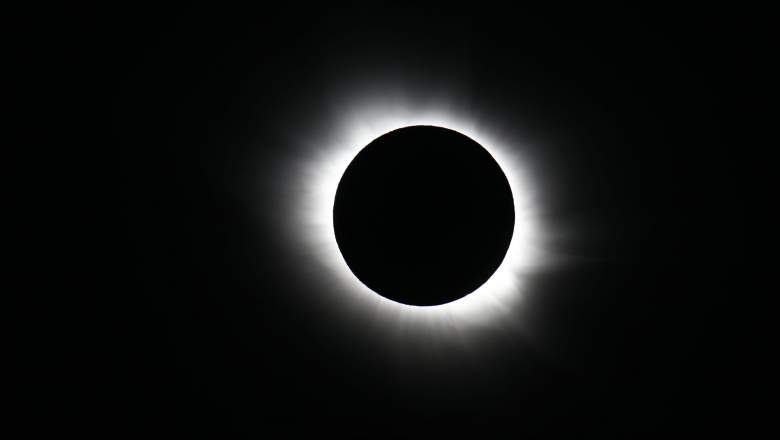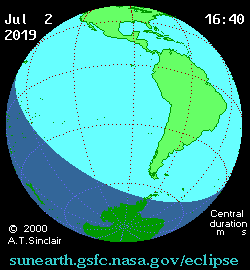
Getty
A solar eclipse is happening today, July 2, 2019. Only a small part of the world will get to see the eclipse today. Unfortunately, you can’t see it in the United States.
Totality will be seen in the southern Pacific Ocean, east of New Zealand, to the Coquimbo Region in Chile, and finally to Argentina at sunset. The maximum visible time will be 4 minutes 32 seconds from the Pacific Ocean. That’s longer than when the eclipse was seen in the United States in 2017. Back then, the eclipse was just 2 minutes and 40 seconds long.
Here’s a map of where the totality of that eclipse will be visible, according to NASA:
You’ll have the best chance to see it if you visit Argentina or take a boat out into the Pacific Ocean. The first location to see the totality will get to view it at 18:01 UTC. The last chance to see the totality will be at 20:44 UTC.
The path of totality for this eclipse will be 200 km wide at its maximum.
If you want to watch the eclipse online, you can catch it through the European Southern Observatory livestream. The stream will begin at 12:15 p.m Pacific (3:15 p.m. Eastern.)
Because of how remote this total eclipse will be, it’s a sure bet that this one won’t attract nearly the attention or the media coverage that the 2017 eclipse had. But if you’re in the area, it would be fun to watch it and compare it to the one in 2017.
The next total solar eclipse after today is December 14, 2020. Like the July 2019 eclipse, this one will be visible from Chile and Argentina.
Then after that, you’ll have to wait until December 4, 2021. This will be an unusual eclipse, with totality moving from east to west across Antarctica. Most eclipses move from west to east.
The next total solar eclipse won’t be visible in the U.S. until April 8, 2024. This one will have a line of totality crossing Texas, through the Midwest, and over Indianapolis, Cleveland, Buffalo NY, over New England, and passing over Maine and New Brunswick, Canada. This will also be the first total solar eclipse visible in Mexico since 1991.
Remember: don’t look directly at a solar eclipse unless you have special glasses. You may not go 100 percent blind, but at the very least you can end up with a permanent spot of blindness in the center of your vision. The technical term for this is solar retinopathy. It means the retina is damaged from looking at the sun, causing a spot of blindness. It typically happens in the middle of the eye, when intense solar radiation hits the retinas and destroys photoreceptors. And you may not notice the damage until the next day.
So if you’re in an area where you can watch in person, don’t look up at a solar eclipse unless you put on special glasses to protect your vision. And make sure you get authentic glasses, because there are a lot of fakes sold online. You don’t want to risk your vision just to save a few dollars.


